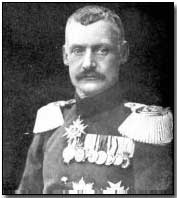Battles - The Battle of Lorraine, 1914
 The French invasion of Lorraine formed one of the major objectives of the French pre-war offensive strategy against Germany, Plan XVII A consequence of the Franco-Prussian War of 1870-71, the loss of
Alsace and Lorraine to Prussia festered in the minds of both French public and military alike, a national humiliation that needed to be addressed during the next war with the Prussians.
The French invasion of Lorraine formed one of the major objectives of the French pre-war offensive strategy against Germany, Plan XVII A consequence of the Franco-Prussian War of 1870-71, the loss of
Alsace and Lorraine to Prussia festered in the minds of both French public and military alike, a national humiliation that needed to be addressed during the next war with the Prussians.
Plan XVII therefore made the recovery of Alsace and Lorraine a central plank of French strategy This much was known to Germany before the First World War began, and was consequently factored into the German Schlieffen Plan.
One of the Battles of the Frontiers, the Invasion of Lorraine (also known as the Battle of Morhange-Sarrebourg) began with the French First and Second Armies entering the city on 14 August 1914, despite the failure of General Paul Pau's 8 August offensive at the Battle of Mulhouse, another key target near the Swiss border, with his 'Army of Alsace'.
The French First Army, under General Auguste Dubail, intended to take Sarrebourg, east of Nancy, a strongly defended town, with General Noel de Castelnau's Second Army taking Morhange, similarly fortified The task of defending these towns fell to German Crown Prince Rupprecht, who had overall command of the German Sixth and General Josias von Herringen's Seventh Army.
Rupprecht implemented a strategy of apparently retreating under the force of the French attack, only to bounce back in a fierce, cleverly manoeuvred counter-attack, having lured the French armies into a strong attack upon a heavily defended position As the French armies advanced they encountered increasingly stern German opposition, including treacherous machine gun fire and heavy artillery.
 Rupprecht, however, pressed German Army Chief of Staff Helmuth von Moltke to authorise a more aggressive strategy, under which the Germans would mount a counter-attack, the aim being to drive the French back to Nancy.
Rupprecht, however, pressed German Army Chief of Staff Helmuth von Moltke to authorise a more aggressive strategy, under which the Germans would mount a counter-attack, the aim being to drive the French back to Nancy.
With Moltke's agreement the offensive was launched on 20 August, whilst de Castelnau's Second Army battered Morhange Caught by surprise and without the assistance of an entrenched position, Second Army was forced to fall back, eventually into France itself.
This in turn obliged General Dubail to retreat his First Army from Sarrebourg. Despite the German onslaught Ferdinand Foch's XX Corps managed to defend Nancy itself.
Gaps began to appear between the French armies, prompting Commander-in-Chief Joseph Joffre to withdraw the Army of Alsace - a bitter blow given the latter's recent success in retaking Mulhouse.
Eight days after the French offensive had begun, 22 August, both First and Second Armies were back to the fortress zones of Belfort, Epinal and Toul.
Diverting from the Schlieffen Plan, Rupprecht's forces were reinforced preparatory to an attack against the two French armies through the Trouee des Charmes, a natural gap between Epinal and Toul. However the French, through the successful use of reconnaissance aircraft, were alerted to the German's build-up and so prepared an adequate defence. Attacked therefore on 24 August, German gains were minimal, limited to the acquisition of a small salient into French lines, itself reduced by heavy French counter-attacks on the morning of 25 August.
The French line held Realistically the troops gathered for Rupprecht's offensive - which comprised 26 divisions of men - would have been put to far greater use at the First Battle of the Marne; however Rupprecht continued fighting until the end of the month, without success Stalemate and trench warfare ensued.
Click here to view a map of the Battle of the Frontiers.
A "dope can" was a metal syringe containing petrol for priming an aircraft engine.
- Did you know?
